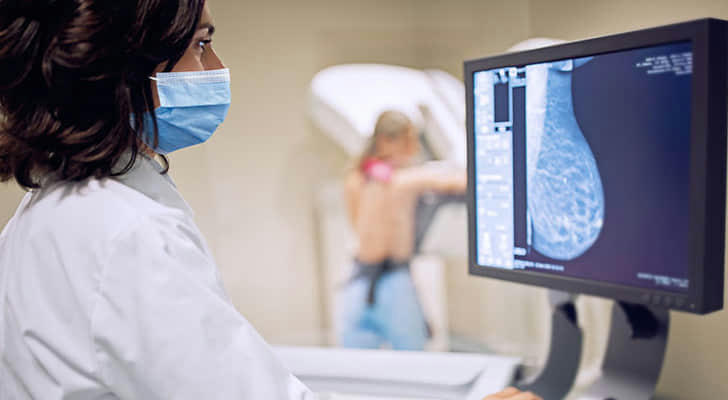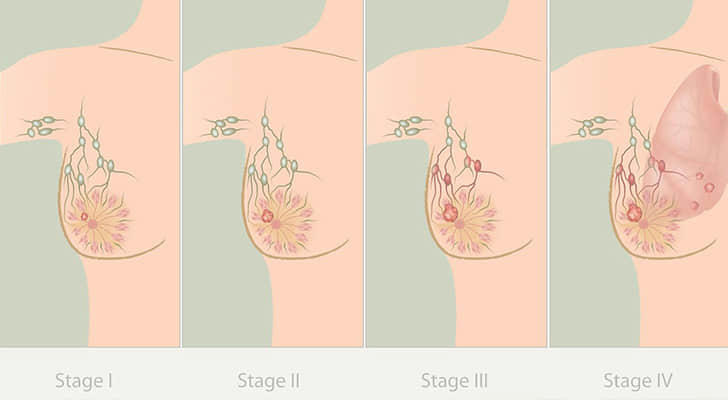Decoding Breast Cancer: Insights into Understanding its Stages

When doctors find out someone has breast cancer, they use a staging system to figure out the best treatment and how likely it is that the person will fully recover.
Once breast cancer is diagnosed, staging becomes really important because it tells us exactly how far the cancer has spread and what type it is.
Staging breast cancer is a detailed process where doctors look at things like the size and exact location of the main tumor, whether nearby lymph nodes are involved, and if cancer has spread to other parts of the body.
This article dives into how doctors determine breast cancer staging and gives a thorough overview of each stage, so you'll understand what each one means.
Unlocking Breast Cancer Staging
The American Joint Committee on Cancer (AJCC) has created one of the most widely used systems for staging breast cancer, called the TNM system. This system sorts cancer based on:
•T: how big the tumor is
•N: whether cancer has spread to nearby lymph nodes
•M: if the cancer has spread to distant organs
Recent updates to this system now also include additional factors such as biomarkers:
•Hormone receptor status
•HER2 status
•Cancer grade
•Oncotype DX score, a genetic test that predicts if cancer might come back
These factors are combined to determine an overall stage from 0 to 4, which shows how serious and widespread the cancer is.

The Impact of Biomarkers on Breast Cancer Staging
Using biomarkers has made breast cancer staging more detailed compared to how other cancers are staged. For example:
Some cancers that were thought to be advanced might now be considered less severe because specific biomarkers help treatments work better.
On the other hand, cancers that were once seen as less advanced might be moved to a higher stage if biomarkers suggest they could grow and spread quickly.
Because staging breast cancer involves many factors, this article will mostly focus on the TNM parts of staging.
What is stage 0 breast cancer?
Stage 0 breast cancer, also known as ductal carcinoma in situ (DCIS), is a non-invasive condition where cancer cells are found only in the milk ducts of the breast and have not spread to nearby tissues.
Breast cancer signs and symptoms
Symptoms of breast cancer can vary greatly among individuals, regardless of the cancer stage. Some people may not have any symptoms, while others may notice significant changes in their breast tissue.
Common symptoms include:
•Presence of painless lumps in the breast
•Swelling of lymph nodes near the breast
•Pain in the breast or nipple area
•Changes in the texture of the breast skin or swelling of the breast itself
•Nipple discharge or inversion
What is stage 1 breast cancer?
Stage 1 breast cancer indicates that cancer cells have started to spread beyond their original location into nearby healthy breast tissue.
Stage 1 is divided into:
•Stage 1A: Tumors are 2 cm or smaller and have not spread to nearby lymph nodes.
•Stage 1B: No visible tumor or tumors smaller than 2 cm, with small clusters of cancer cells in nearby lymph nodes.
What is stage 2 breast cancer?
Stage 2 breast cancer is categorized into two types:
•Stage 2A: No visible tumor or tumors smaller than 2 cm, with cancer found in up to three nearby lymph nodes.
•Stage 2B: Tumors between 2 and 5 cm with cancer detected in up to three nearby lymph nodes, or larger tumors without lymph node involvement.
What is stage 3 breast cancer?
Stage 3 breast cancer includes:
•Stage 3A: Tumors of varying size with cancer spread to between four and nine nearby lymph nodes, or larger tumors with minimal lymph node involvement.
•Stage 3B: Tumors of varying size with cancer spread to the chest wall or skin of the breast, along with up to nine nearby lymph nodes affected.
•Stage 3C: Extensive involvement of lymph nodes, including those near the collarbone, indicating widespread progression.
What is stage 4 breast cancer?
Stage 4 breast cancer, also known as metastatic breast cancer, occurs when cancer cells spread from the breast and nearby lymph nodes to other parts of the body, such as distant lymph nodes and tissues. This is called "metastatic" cancer because it has spread beyond its original location.
According to the National Cancer Institute (NCI), breast cancer commonly spreads to areas like the bones, brain, liver, and lungs. In a 2017 study, researchers found that most people with stage 4 breast cancer had cancer that had spread to their bones (65.1%). The lungs were the next most common site (31.4%), followed by the liver (26%), and the brain (8.8%). About a third of participants had breast cancer that had spread to more than one of these areas.
Symptoms of metastatic breast cancer can vary depending on where the cancer has spread. Generally, symptoms include extreme fatigue, weakness, unintentional weight loss, and pain where the cancer has spread or nearby.

Survival Rates
Check out these survival rates from the SEER database, run by the National Cancer Institute:
For localized breast cancer: 99.3% survive five years.
In regional cases: 86.3% make it through.
If it's spread to distant places: 31% survive.
Overall, the survival rate is 90.8%.
Knowing these rates helps patients and caregivers make informed choices about treatment and ongoing care.
In summary, breast cancer staging plays a crucial role in deciding how treatments should be given and predicting what might happen. Each stage shows how far the cancer has spread, helping doctors customize treatments for each patient. As research progresses and biomarkers become more important, staging methods are getting better, giving hope for more accurate predictions and better treatments for people with breast cancer.
